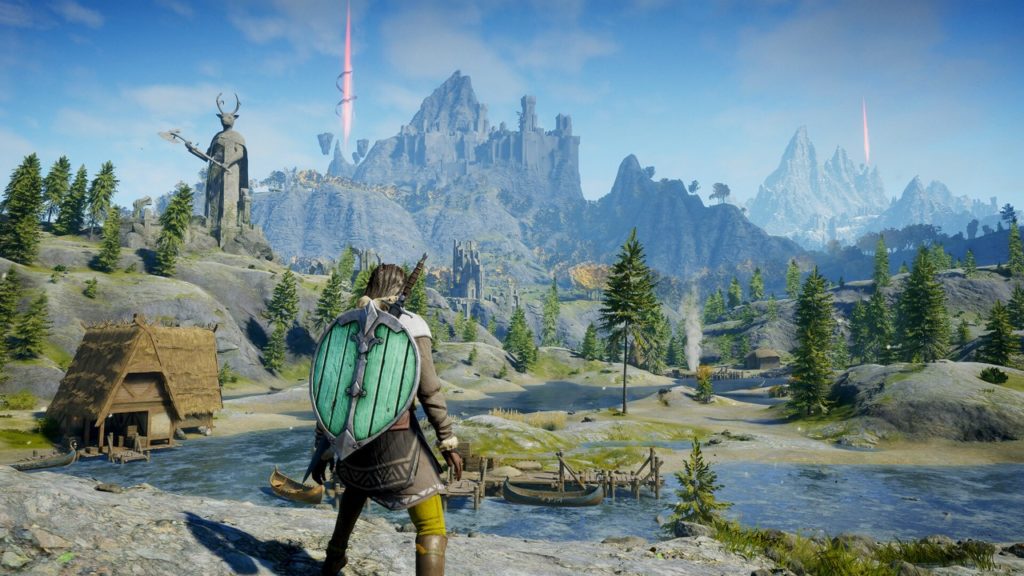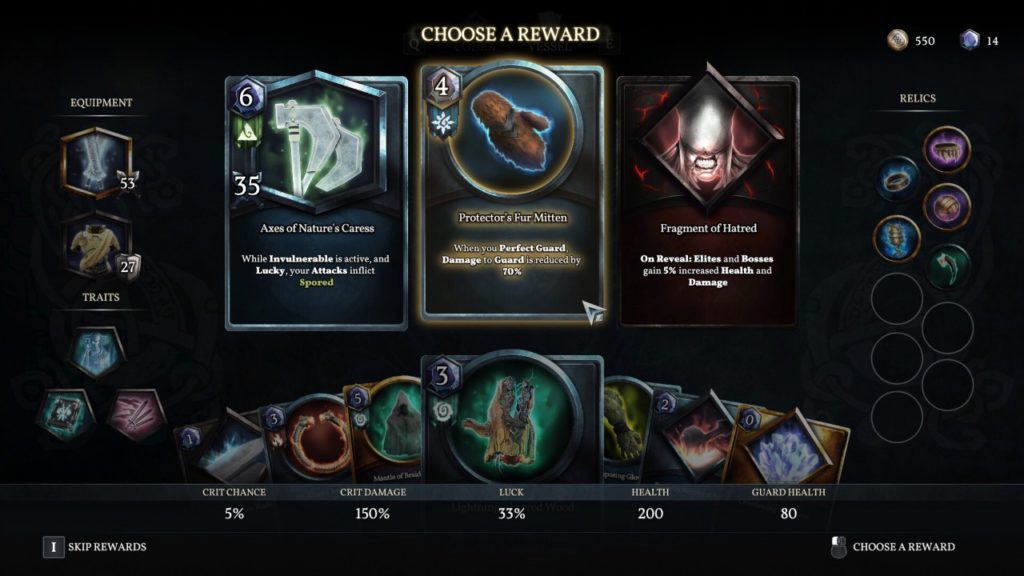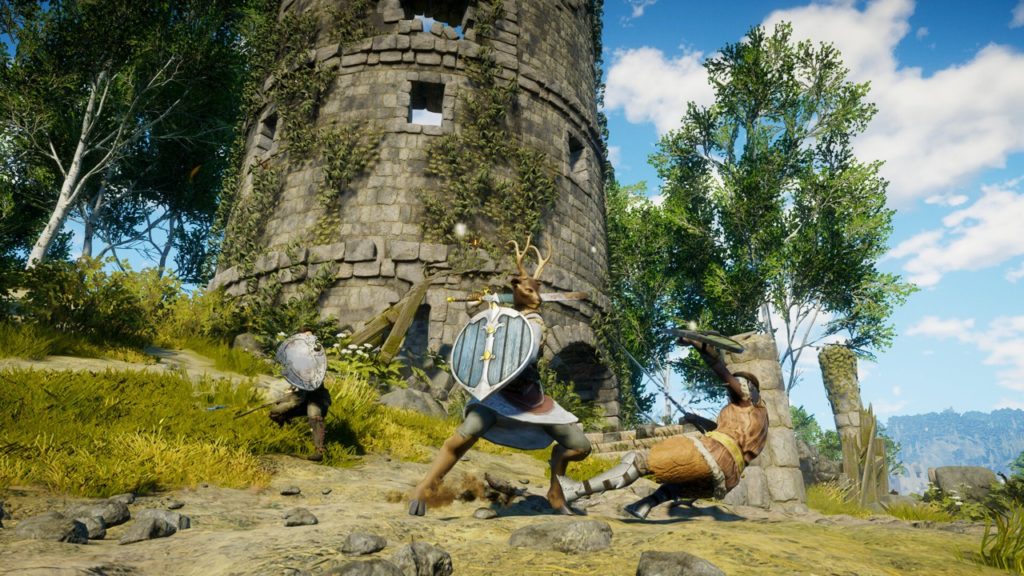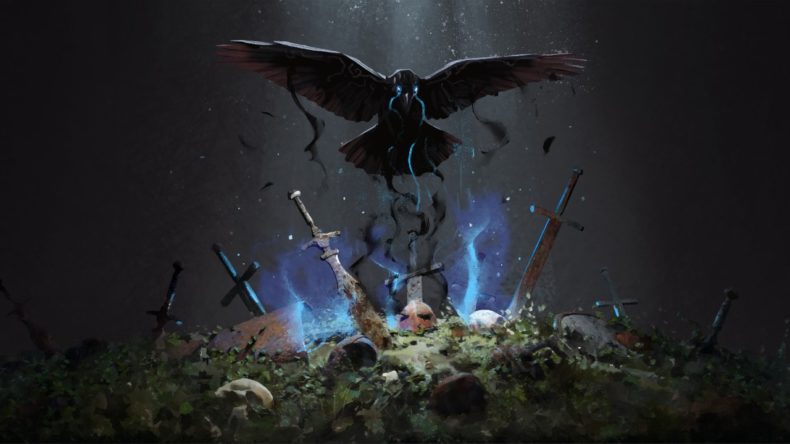March 30, 2023
Ravenbound, from Systemic Reaction, is a game that struggles with the weight of its own ambition. While that sounds damming, I only said “struggles”; for the most part it manages to bear that weight. But not always. Sometimes, the cracks begin to show in its shiny façade.
It follows the roguelike template of games like Zombi and Rogue Legacy, where each time you die you’ll respawn as a completely new character, but retain some of the skills and gear you unlocked in your last incarnation. Based on Scandinavian folklore – not Norse mythology, as the developers are quick to reinforce – Ravenbound takes place in the land of Ávalt.
Plagued by the powers of Hatred, Ávalt is a realm in need of a hero. You take control of Vessels, warriors with great potential and the ability to transform into a Raven for speedy travel around the vast open world. The idea is to find and cleanse Tears of Hatred, which will steadily reduce the corruption in the area, weakening the boss and allowing you access to better loot and items. There are five bosses to slay, and each one is a monumental task, although you only need to kill one to face the final boss. If you do, though, you’ll be grossly underpowered.

Which is an issue in Ravenbound, because the combat is just not precise enough to be skill-based, and you can’t rely on gear and skills, at least early on, to keep you alive. It has standard masocore-style controls, with heavy and light attacks on the right triggers, an evade move, and a parry (with or without shield). The trick is to parry an enemy, which knocks them down if timed right. Only some enemies are unaffected by it, some enemies will tank right through your attacks as if you’re hitting them with a pillowcase, and most times they’ll come at you in groups, rendering your parry almost useless.
It’s an incredibly frustrating system, and one not helped by the floaty movement and sluggish animations. If the combat was stronger, it might be enough to redeem Ravenbound’s few other faults, but it makes up so much of the game that I struggled to engage for long periods. When facing one opponent, it fares better, but that’s quite a rarity. It makes progression slow, too. As an example, the first main quest asks you to cleanse a Tear of Hatred. I flew there in Raven form (which took ages, I might add) and after three attempts managed to cleanse it. All you have to do is kill the enemies around it. Unfortunately, I was unable to do so until I rolled a third character and returned to the Tear to find that the game had exchanged the three enemies that were there for one tough one which I managed to kill.
I then emerged from the cave looking for the glowing nearby chest that I was assured was now cleansed. Great, I thought, let’s get some loot. Sadly, though, the chest was guarded by a huge ogre who I could barely damage, let alone kill, who promptly destroyed me. So what was the point? It put me off even restarting again for a while.

The progression system itself is needlessly complex too. The idea is to slay elite enemies to earn three Shards with which to unlock cards. Cards come in a variety of types, which grant anything from new armour and weapons to new abilities and stat buffs. They cost Mana to equip, so you’ll need to choose what to use at any given time. While it offers a decent selection with a lot of potential for diversity, it throws a lot at you even in the tutorial. Oh, and if you try to open those special chests before cleansing them, you’ll get a Hatred debuff that can make the rest of the current run harder.
Each time you die you can choose from three new vessels, with different starting stats and weapons. They have unpronounceable names and randomly generated faces that make them hard to get attached to. Also, despite some cool races like antlered deer people, Ravenbound is a very Soulsy Roguelike and so takes a weird kind of joy in telling us next to nothing. It’s a world rich with lore and history, but you’ll need to dig through menus to find a lot of it.
I don’t dislike Ravenbound but it did frustrate me a lot. It overreaches in almost every department, when a little focus would go a long way. Even the open world seems mostly in service of the flight mechanic, so getting from one enemy camp or ruin to another takes ages. And you can only fly from Raven Towers, which are widely scattered. The flight itself is fun enough but can be finicky at high speeds. And there’s also a grappling hook which does such weird things with physics that I mostly ignored it.

Ultimately there’s a lot of potential in Ravenbound that never quite bears fruit. The world is interesting and pretty enough, but the sense of grim darkness it seems to be going for is watered down by a lack of real atmosphere. I never felt the urge to explore the open world, as often I’d see a ruin standing majestically atop a craggy hill, fly to it, and find it either empty or occupied by enemies that smeared me on the grass in two hits.
If you’ve got the patience to grapple with its systems – and its grapple, actually – then there’s a good game in Ravenbound. At present though, it’s buried under a lot of extraneous stuff that makes the combat feel like a chore and the open world feel too big for its content. Press on through the opening few hours and you’ll unlock skills and cards that make subsequent runs feel more balanced and enjoyable. The combat is hit and miss and the systems are quite complex for newcomers, but stick with it and it does improve considerably.
World is intriguing
Raven flight is a cool concept
Lots of space to explore
Combat isn't great
Animations feel sluggish
Quite complex from the start
Ravenbound presents an intriguing world that simply doesn't live up to its potential. It's a decent enough adventure, but lacks the nuance needed to stand out.





